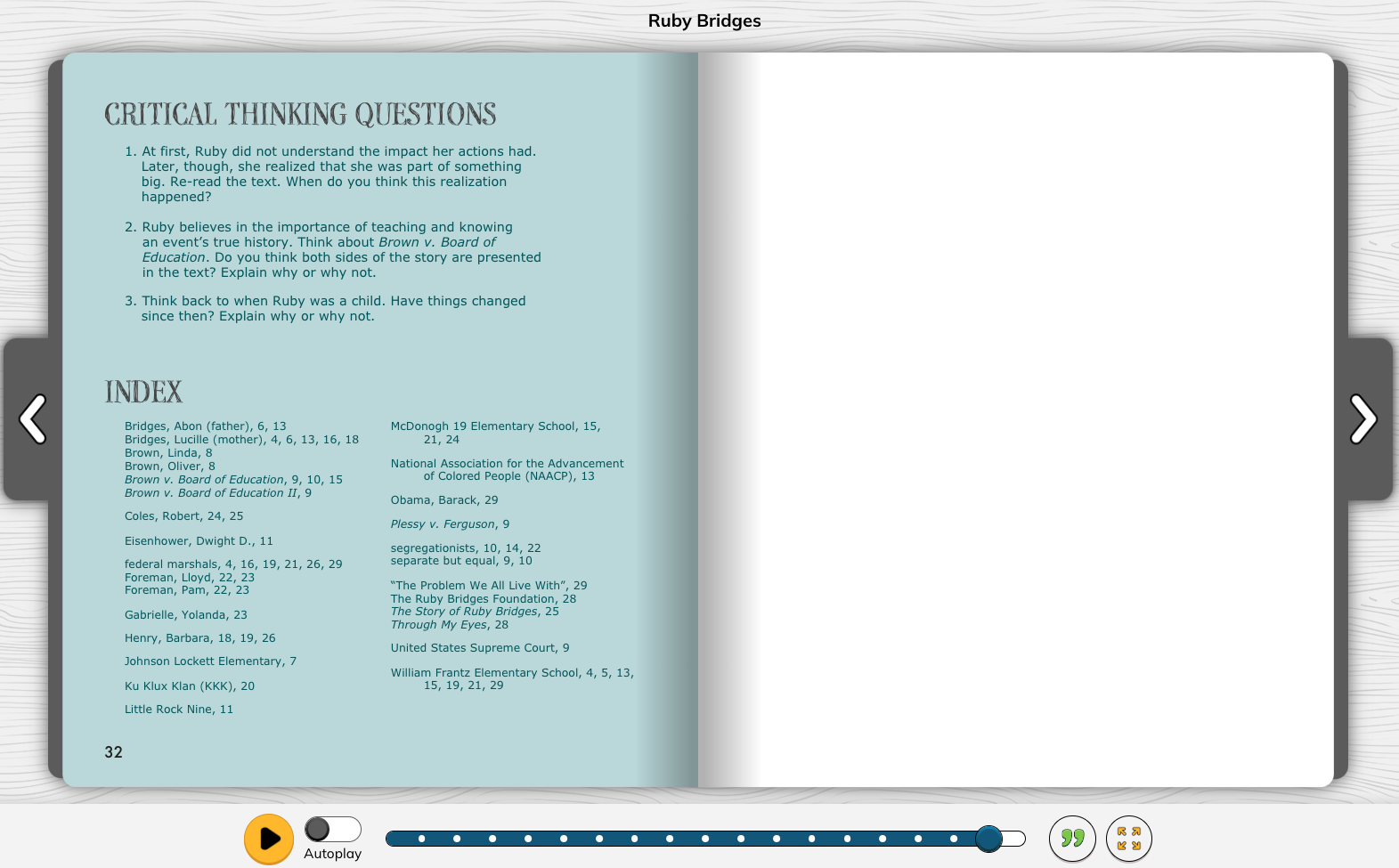
- Early learners have an innate sense of fairness.
- Early childhood is the perfect time to begin teaching social justice and to help develop children's empathy, respect, and tolerance for others and their experiences.
- Technology can be a great tool to look beyond personal experiences and glimpse into the experiences of others.
- Pick one social-justice theme to dive into during the school year.
- Using picture books can help students see the bigger picture.
Share and explore picture books from INFOhio.
Picture Books from INFOhio about Activists
- Booker T. Washington - Explores the life, challenges, and accomplishments of educator and author Booker T. Washington.
- Dolores Huerta: Get to Know the Voice of Migrant Workers - Chronicles the work of the influential activist who helped farm workers demand better pay, reasonable hours, and respect on the job. She knew laws needed to be passed to protect the workers and improve their lives. Learn more in this biography about this influential activist and her fight for what was fair.
- Harriet Tubman - Explores the life, challenges, and accomplishments of Harriet Tubman a conductor on the Underground Railroad.
- Malala Yousafzi: Champion for Education - Provides a simple introduction to the life of Malala Yousafzai and how she continues to work to ensure that every girl around the world has the chance to go to school.
- Martin Luther King Jr. - Presents an easy-to-read biography about Martin Luther King, Jr. and how his efforts to stop racism affected society.
- Ruby Bridges: Get to Know the Girl Who Took a Stand for Education - Presents a biography of Ruby Bridges who was just six years old when she was chosen to be the first (and only) black child in the all-white William Frantz Elementary School.
Use the Critical Thinking Questions from the eBook, Ruby Bridges: Get to Know the Girl Who Took a Stand for Education, to help students think about what they read and how it connects to their world today.


Reflecting on Your Learning
Consider the following questions:
- At the very beginning of this chapter, the author states, “I watch them [her students] to learn how they engage socially with one another and navigate roles and relationships independent of me, their teacher.” She shares about her students' sense of fairness. How do your students relate? Can you remember any examples of social justice being discussed between your students?
- Which one of the author’s project examples do you think you could replicate in your classroom? Why?
